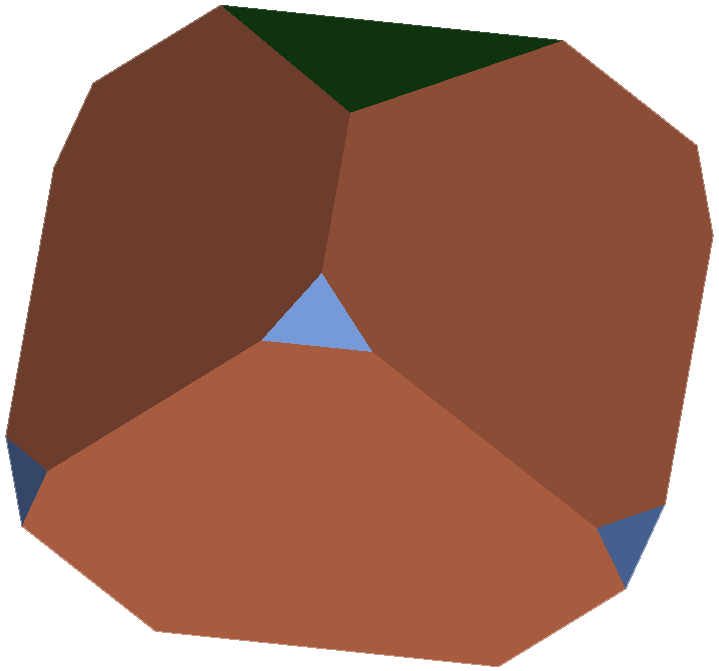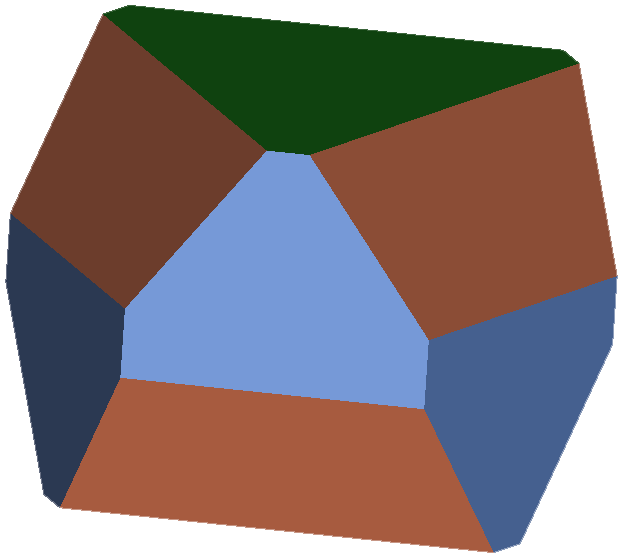Atomistic Simulation of Portlandite and C-S-H
Cementitious materials are complex systems with many interfacial interactions over many length scales (dissolution, nucleation, crystallization, polymer adsorption, aggregation). The significant role of the different types of interfaces, which ultimately control the properties of cements and concretes from the early stages to the final microstructures and macroscopic properties, demands a deep knowledge of the roles of the interfaces at an atomistic level.
The composition of cementitious materials is complex with several different mineral phases and the nature of the solid-liquid interfaces where dissolution of the anhydrous phase, adsorption of cement admixtures and growth of new crystalline phases take place are very difficult to access experimentally. The primary objective of the simulation work on cementitious systems is the study of different phases of cement, namely portlandite (Ca(OH)2) and tobermorite as a C-S-H model structure.
Portlandite
For portlandite the objective was to understand its growth from solution better. Consequently different crystallographic portlandite-water interfaces were studied extensively as well as the adsorption of Ca2+, OH– and different silicate species onto these surfaces. This allowed us to gain valuable insight into the influence of the Ca2+/OH– ratio and of silicate species present in solution on the growth of portlandite.
|
|
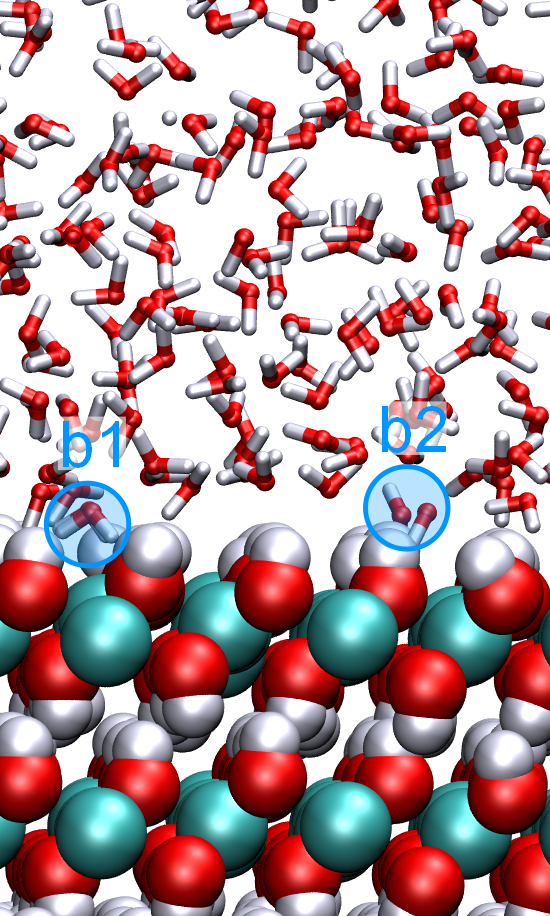 |
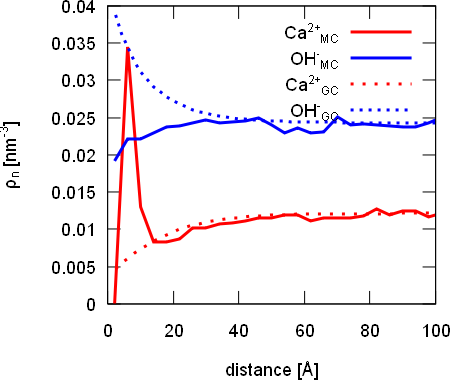 |
|
| Theoretically predicted morphologies of portlandite in pure lime solution. | Simulated portlandite-water interface structure of the [00.1] surface with different surface water sites. | Theoretically predicted distribution of Ca2+ and OH– ions at the [00.1] portlandite-water interface. |
C-S-H
For tobermorite, different defects, which increase the Ca/Si ratio in the structure and tobermorite-water interfaces were studied to try to get a better understanding of the atomistic structure of C-S-H. C-S-H is the most abundant hydrate in cementitious materials and presents a defective, nanocrystalline form which does not mature even after prolonged ageing of several decades. The reason for this and the exact atomistic structure are still not entirely understood, but the study of tobermorite as a model structure can give some insight.
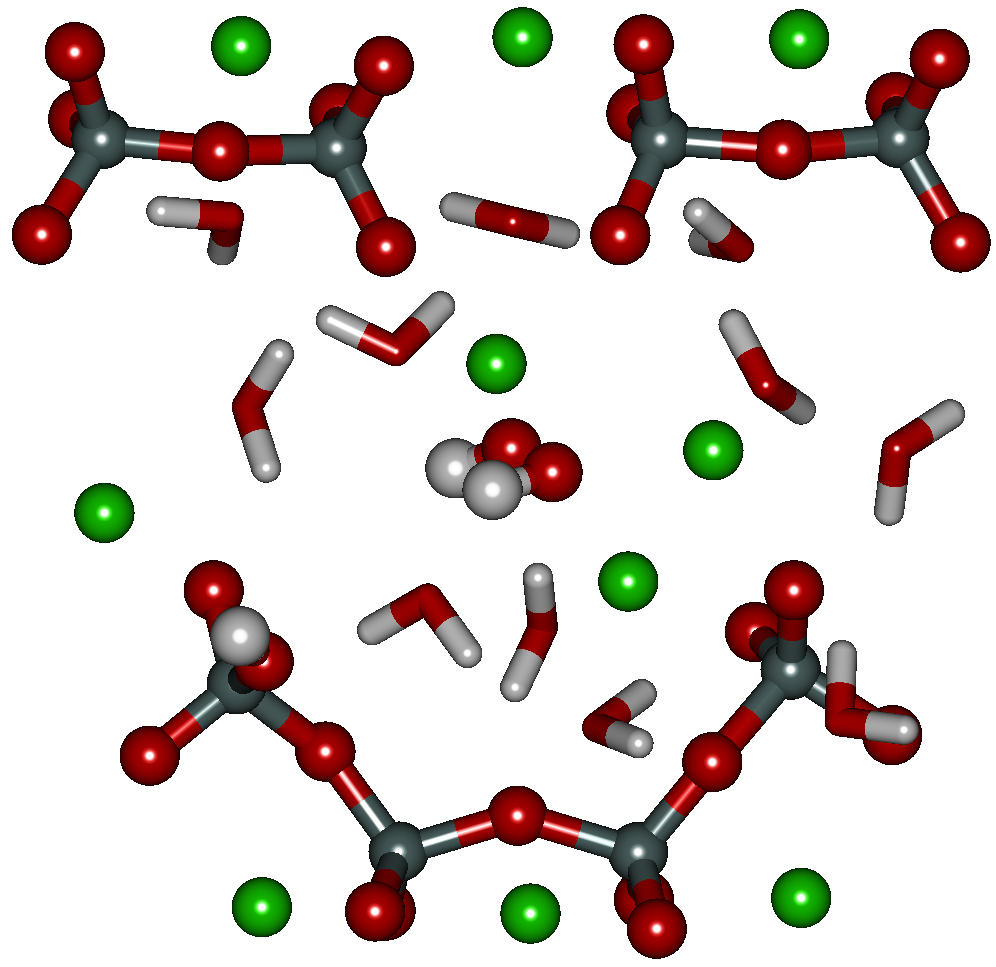 |
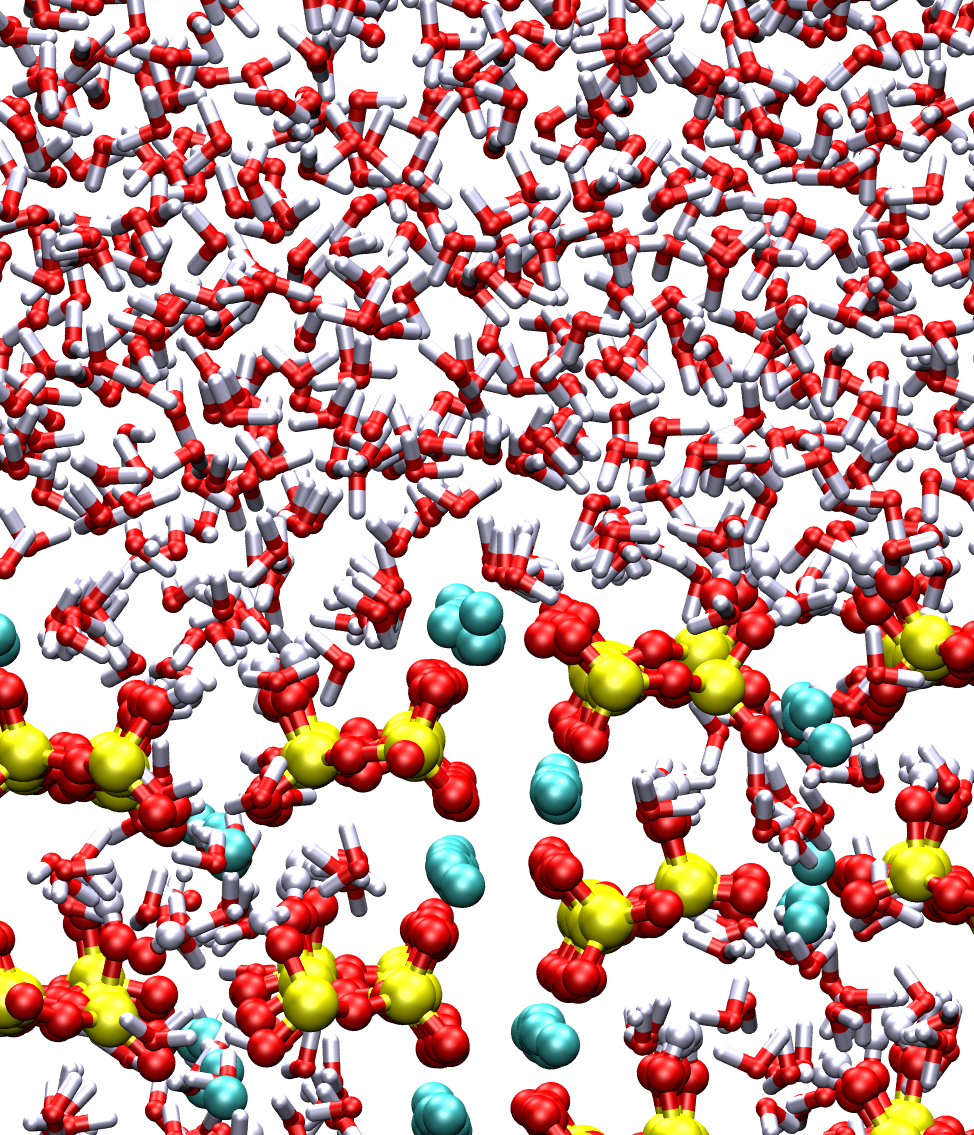 |
|
| Stable defect structure in 14 Å tobermorite with a Ca/Si ratio of 2.0. | Simulated tobermorite-water interface structure of the [0-10] surface showing a low interfacial energy. |
Ongoing Work
Modelling and simulation work on cementitious systems is still ongoing and is carried out within nanocem, the industrial-academic research network on cement and concrete. One core area of future work will be the development of a database for force fields that can be used to study cementitious systems with their strong and weak points.
Publications
S. Galmarini and P. Bowen. Atomistic simulation of the adsorption of calcium and hydroxide ions onto portlandite surfaces. in prep
S. Galmarini and P. Bowen. Atomistic simulation of cementitious systems. Thesis EPFL 2013

